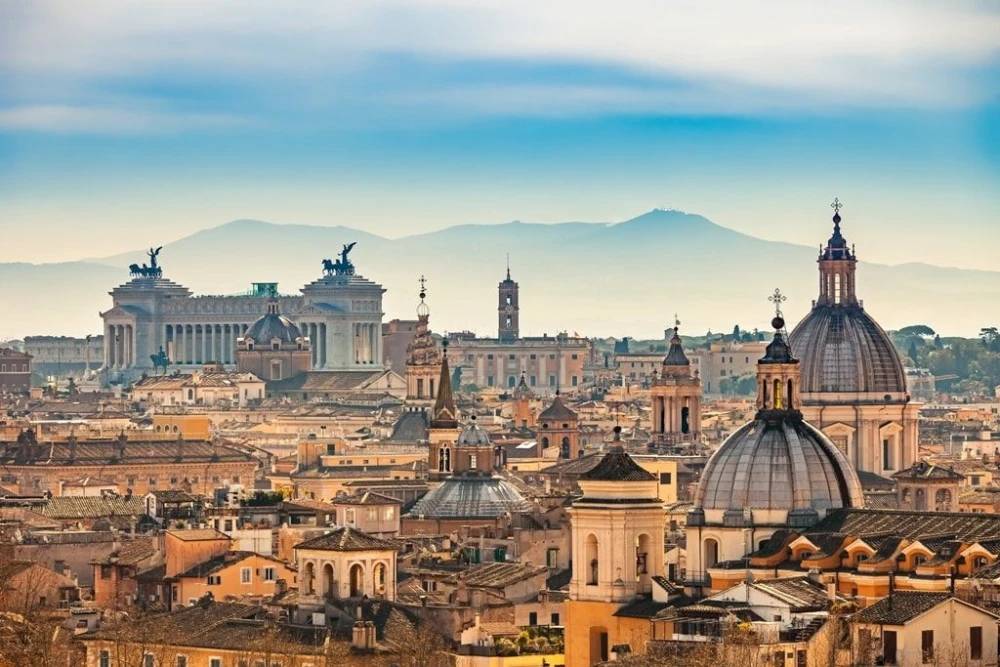15124, Maroysi, Athens, Greece

Civitavecchia (Rome), Reggio Calabria, Katakolon (Ancient Olympia), Corfu, Dubrovnik, Split, Naples
Approach Ports


Our gateway to the Eternal City, Civitavecchia has served as Rome's seaport since the 13th century, boasting a long and venerable history. Its location near the modern city, made it a perfect vacation resort for emperor Trajan, who built a pleasure villa. while Bernini and Michelangelo designed the harbor fortifications. Yet the Eternal City, the ancient capital of the Western World and the center of Christianity for nearly 2.000 years, is our main reason to be here. YYou can visit the ruins of the Forum and the Colosseum, throw a coin in Fontana di Trevi to make sure you return to Rome one day, take a photo in front of the Vatican, view the splendors of the Sistine Chapel or climb the Spanish Steps, once the heart of Rome's Bohemian Quarter and enjoy a delicious gelato, in the glamorous area.

Katakolon Port occupies the north-west part of the Peloponnese. To the west it is washed by the Ionian Sea. It is the current harbor of the regions capital city Pyrgos and serves as the gateway to the site of ancient Olympia, one of the most important archaeological sites in the world and birthplace of the Olympic Games. Visitors can see the remains of the original Olympic stadium, the Bouleuterion and the Temple of Zeus, enjoy free time in modern Olympiato shop or visit the Museum of the Olympic Games.

Fortresses flank your entrance to magnificent Corfu, one of the most beautiful of the Ionian Islands. Lose yourself in the Venetian old town or head north of the island, for dramatic seascapes. Explore the legacies of Greek, Roman and Venetian Empires or simply marvel at nature’s treasures that are hidden in this beautiful island, swathed in emerald green, lapped by turquoise waters and fringed with golden sand. The once pastel colours on Venetian buildings may have faded, but the welcoming scent of eucalyptus, fig and lemon trees are fragrant as ever.

Dubrovnik, the so rightfully called "Adriatic jewel", is walled all around with ramparts that drop to the sea and enclose a town of closely clustered buildings, mostly attired in white walls and brilliant red rooftops. A walk along its cobblestone streets, where time seems to stand still, will reveal an idyllic small town, with many highlights, such as Roland's Column, the Bell Tower or the Old Port, the Franciscan Monastery/ Old Pharmacy Museum, Rector’s Palace (the most historic monument in Dubrovnik), Sponza Palace and the Dominican Monastery, between the Sponza Palace and the Ploče Gate. Time allowing, take the cable car and enjoy the best views of Dubrovnik and the surrounding area are, from the top of the Srd Hill.

Split, built under the orders of the Roman emperor Diocletian, who lived out his last days after abdicating in AD 305, is located between Venice and the Ionian Islands, on the Dalmatian coast and is one of the most important ports of Croatia. Today, the remarkable residence of the Roman Emperor, listed as a UNESCO World Heritage Site, awaits your discovery. The white limestone palace, part luxurious villa, part military camp, is enclosed by imposing walls and connected by roads linking the eastern Silver Gate with the Iron Gate to the west. Within its premices, you can see an octagonal domed mausoleum, temples and a monumental court accessing the imperial apartments.

Naples is the third-largest municipality in Italy, after Rome and Milan and one of the chief commercial cities of Europe. The city center has been designated a UNESCO World Heritage Site and the surrounding areas are dotted with cultural and historical treasures, with most notable, the restored ruins of Pompeii. Naples itself is mere enduring greatness. Highlights include Castel dell' Ovo, Castelnuovo, Castel Sant'Elmo, a medieval fortress located on a hilltop and national museums dedicated to art and archaeology. There is also a docile bay; the peaceful cypress-tufted islands of Ischia, Procida and Capri and over the city, Mount Vesuvius, volcano and national park. Take the opportunity to see the only active volcano on the European mainland, which blew in A.D. 79 and buried the city of Pompeii, or visit the magnificent Amalfi and Sorrento coasts.

Our gateway to the Eternal City, Civitavecchia has served as Rome's seaport since the 13th century, boasting a long and venerable history. Its location near the modern city, made it a perfect vacation resort for emperor Trajan, who built a pleasure villa. while Bernini and Michelangelo designed the harbor fortifications. Yet the Eternal City, the ancient capital of the Western World and the center of Christianity for nearly 2.000 years, is our main reason to be here. YYou can visit the ruins of the Forum and the Colosseum, throw a coin in Fontana di Trevi to make sure you return to Rome one day, take a photo in front of the Vatican, view the splendors of the Sistine Chapel or climb the Spanish Steps, once the heart of Rome's Bohemian Quarter and enjoy a delicious gelato, in the glamorous area.
Itinerary







